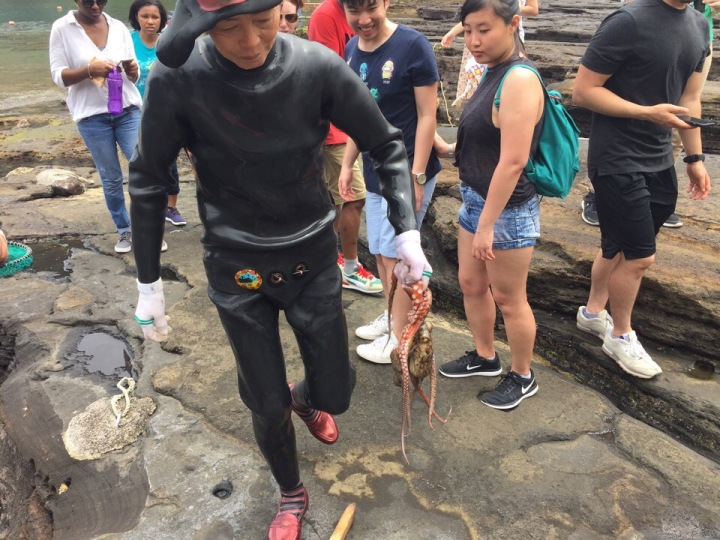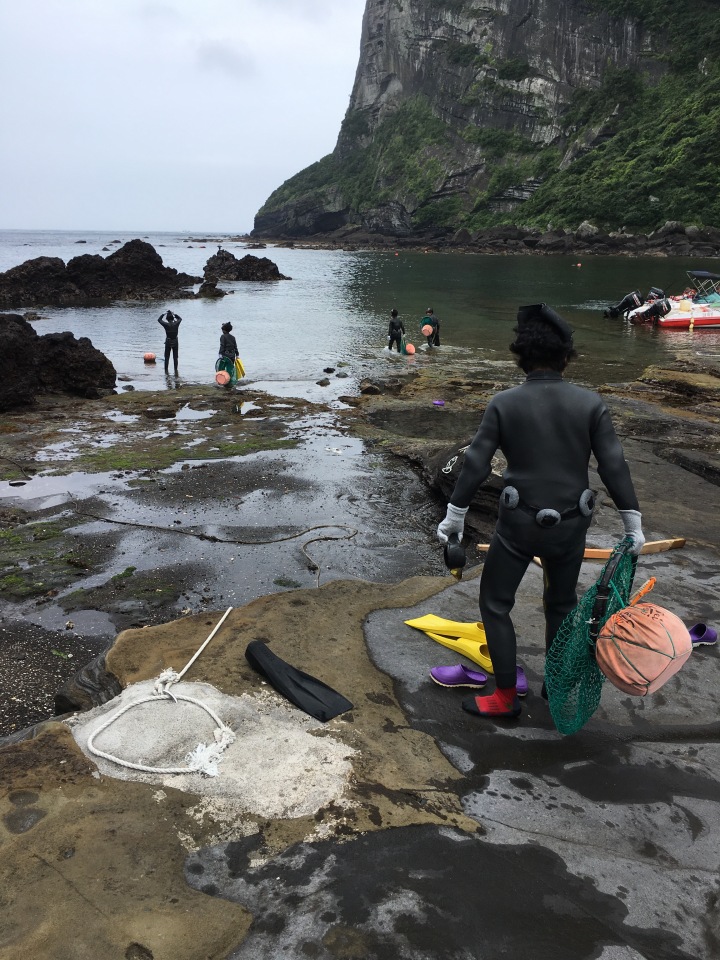Here it is again, the Italian book trailer for Figlie del Mare, available now in Italy from Longanesi:
The Bookseller Interview by Katherine Cowdrey
Haenyeo Village House
 This is an example of a typical coastal village house that a haenyeo diver would have lived in on Jeju Island. If you look closely, you’ll notice the haenyeo standing on the porch. A stone wall fences in the property, while also acting as a protective barrier against the island’s strong winds. Jeju Island was once crisscrossed with these stone walls, which can still be seen today in certain parts of the island. This house is one of many located at the Jeju Folk Village where they work to preserve the island’s history. Many Korean dramas are filmed here, and the village sets remain intact for visiting fans. Their website is here if you’re interested in visiting one day!
This is an example of a typical coastal village house that a haenyeo diver would have lived in on Jeju Island. If you look closely, you’ll notice the haenyeo standing on the porch. A stone wall fences in the property, while also acting as a protective barrier against the island’s strong winds. Jeju Island was once crisscrossed with these stone walls, which can still be seen today in certain parts of the island. This house is one of many located at the Jeju Folk Village where they work to preserve the island’s history. Many Korean dramas are filmed here, and the village sets remain intact for visiting fans. Their website is here if you’re interested in visiting one day!
Jeju Island Diving Women
I have read about them, watched them on film/computer screens and dreamed about them in my sleep as I wrote my novel, but today I actually met a group of haenyeo diving women. I’m on South Korea’s famous island, Jeju-do. Tucked away in a cove below the looming Sunrise Peak on the island’s eastern coast is a beach of black volcanic sand where the haenyeo group have set up shop. Here they dive for abalone, conch, sea cucumbers, sea urchins, and (if they’re very lucky) an octopus or two and sell them to customers awaiting their coastal lunch in the Haenyeo House. This building overlooks the rocky shore and serves as kitchen, restaurant, and changing facilities for the divers. Today was a lucky day because the haenyeo diver who walked ashore carried the prized catch in her hand.

It sold for 50,000 KRW (roughly 44.00 USD), and I was the lucky customer who got to eat it! Even with the three of us (my mother, my grand-aunt, and I) the octopus was too big a beast to eat by ourselves so we offered the second plate to the haenyeo divers. Needless to say, they were chuffed! Fresh from the sea and quickly boiled, the octopus tasted amazing–think food of the gods!
But that was not all they served us. We also ate raw sea urchin brought straight from their nets, with a side of seaweed.
Eating the fruit of their labour was a definite high, but witnessing them walk into the sea, dive for an hour, and return with nearly-full nets, some of which would become our meal, was beyond a dream come true. The ‘women of the sea’ are strong, hard-working divers who believe in the community they built and the work they do to provide for their families in a timeless profession passed down to them from the many generations of haenyeo who came before them. This may well be the last generation of haenyeo to dive along Jeju Island’s shores, as they are nearly all over the age of sixty, and not many of their daughters choose to follow in their footsteps. The women who dove for us today were all in their seventies. They took my breath away.





